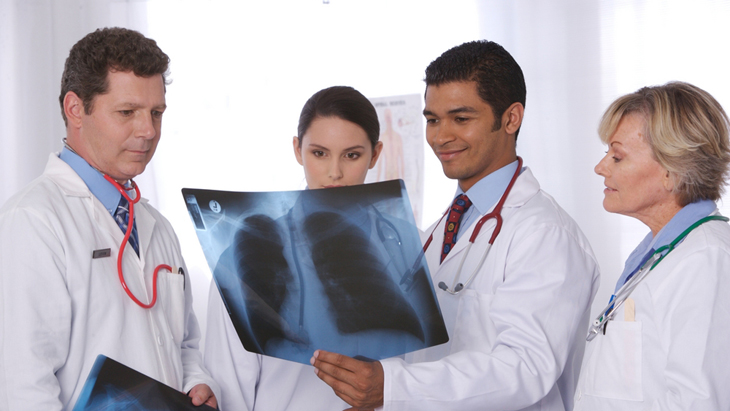Bone scans: An overview
By Kathryn Senior on 19 July 2022
A bone scan is a test that uses radioactive material to show up abnormalities in your bones, such as areas of increased activity that could indicate cancer, or areas with poor blood flow. These tests can show up problems many weeks before they would be seen on a standard x-ray image. This article on bone scans is written by Kathryn Senior, a freelance journalist who writes health, medical, biological, and pharmaceutical articles for national and international journals, newsletters and web sites.
What is a bone scan?
A bone scan can be used to look at specific areas of concern, or in cases such as cancer, the whole skeleton can be scanned as a series of images. However, while a bone scan can reveal a wide range of problems, they are usually just one part of your diagnosis. You may also require x-rays and other scans, such as CT scans or MRI scans, along with blood tests and biopsies to complete the picture.
What can a scan tell you?
A bone scan may be requested for you for a variety of reasons. These include:
- Suspected bone cancer – a bone scan can identify bone cancer or show if cancer has spread from another area of the body
- Complex fractures – bone scans can show some fractures that do not show up on conventional x-rays, especially stress fractures and fractures in complex areas such as the spine, feet or hands
- Bone disease – bone scans can detect damage or deterioration of the bone caused by diseases such as Paget’s Disease
- Other bone problems – bone scans can detect abnormal activity caused by infections or other abnormalities and may explain the cause of bone pain
How it works
The bones have a very good blood supply so they readily absorb a radioactive tracer injected into the bloodstream. A gamma camera is then able to take pictures of the radioactive emissions from the bones and it is possible to identify how the tracer has been absorbed.
In normal bones, the radioactive tracer is absorbed evenly, giving a picture that resembles a conventional x-ray. However, where there are problems, this absorption will be uneven and will show up as brighter or darker areas. The bright areas on a bone scan, known as ‘hot spots’, show the increased activity of growth or repair, and may indicate a tumour, break or infection. Dark areas on a bone scan, known as ‘cold spots’, indicate decreased blood flow, suggesting damage or disease.
Having it
A bone scan is a painless procedure that involves very little risk. The most you will feel is the prick of the needle and possibly some discomfort in having to lie still during the scan. Although the use of radioactive material may sound dangerous, the radiation is at a very low level, approximately equal to 200 conventional x-rays, and will be eliminated from your body in around 24 hours. The gamma camera itself is only a receiver and does not emit any radiation.
- Before your scan: You are advised to avoid medicines that contain bismuth (such as indigestion medicines like Pepto-Bismol) for four days before your scan, as this can interfere with the results. You should also tell your doctor if you have recently had a barium x-ray.
- On the day of your bone scan: You will be asked to attend for your injection several hours before your scan, to give the tracer time to reach your bones through your blood stream. You will be asked to drink plenty of fluids during this time to speed up the process. Some hospitals may allow you to leave after your injection and return later for your scan. Just prior to your scan, you will be asked to empty your bladder to prevent any accumulated tracer from blocking your pelvic bones. You will then be asked to lie still while a series of images are taken of your bones. This usually takes about an hour.
- After your bone scan: Following your scan, you are advised to stay away from pregnant mothers or young babies for 24 hours, just to be on the safe side, until the tracer has been naturally eliminated from your body.
Risks
There are very few risks involved in a bone scan but you will not be given one if you are pregnant or think you may be pregnant, as the radioactive material may cross the placenta and affect the developing foetus.
Nursing mothers should express enough milk to feed the baby for around six hours after their bone scan and should ask someone else to feed the baby. This is not because the milk itself is radioactive, but the baby should not be in such close contact with the mother until the tracer has left her body. It is safe to express more milk after six hours, but this should still be given to the baby by someone else.
Getting your scan results
How quickly you get your results will depend on the reason for your bone scan and how quickly you have any associated tests. If your GP or specialist has requested an urgent bone scan, in cases such as cancer, your results will be given priority, but in general it will take around two weeks for your bone scan to be analysed by an expert and a report to be written and sent out.
Did you enjoy this? Share:

